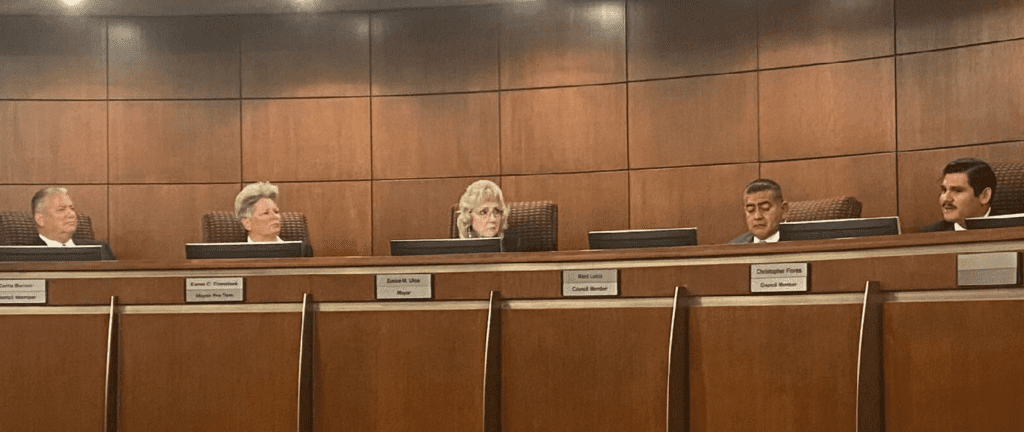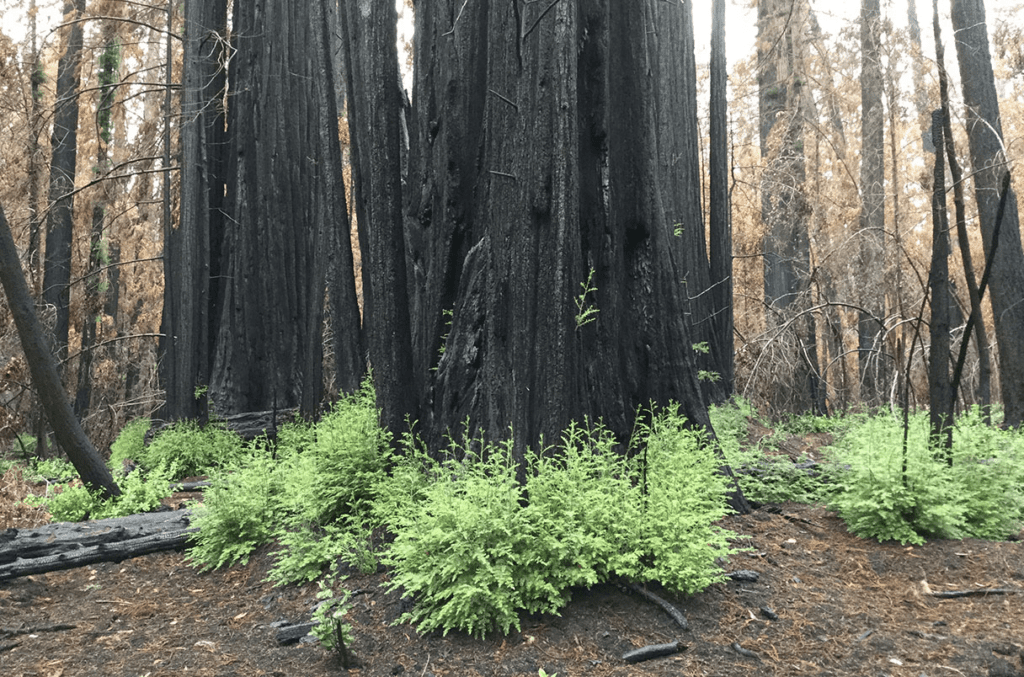Daniel Salzler No. 12301
EnviroInsight.org Five Items December 8, 2023
—————Feel Free To Pass This Along To Others——————
If your watershed is doing something you would like others to know about, or you know
of something others can benefit from, let me know and I will place it in this Information .
If you want to be removed from the distribution list, please let me know.
Please note that all meetings listed are open.
Enhance your viewing by downloading the pdf file to view photos, etc.
The attached is all about improving life in the watershed through knowledge.
If you want to be removed from the distribution list,
please let me know. Please note that all meetings listed are open.
Check our website at EnviroInsight.org
1. Lake Mead Deal Set To Conserve 100,000 Acre Feet Of Water In 2023 By Greg Hahne The Bureau

of Reclamation has announced an agreement to conserve 100,000 acre feet of water in Lake Mead for 2023.
That’s enough water to support upwards of 300,000 single family homes for a year on average. According to a press release, the agreement with the Imperial Irrigation District is part of a broader plan from earlier this year to conserve water in the lower basin.
The move announced Friday is set to raise Lake Mead’s elevation by 1.5 feet.
The agreement includes nearly $78 million in federal funding aimed at water conservation, efficiency, and protection in the Colorado River System.
The Bureau of Reclamation and the District are set to continue working on an agreement to last through 2026.
2. Chino Asks Voters To Fund Infrastructure With Tax Increase. Source : Sinclair Andruska, Chino Champion.

Mayor Eunice Ulloa urged the Chino community to “please trust us,” as the city council unanimously voted Nov. 21 to place a one percent sales tax increase measure on the March 5, 2024 ballot to fund $260 million of infrastructure projects and resolve a $15 million annual deficit that will begin in July of next year.
The mayor said that a couple of years ago, she asked staff for a multiple-year budget, projecting two, five, and ten years ahead. She said it was “quite shocking” to see that in four or five years, the city’s reserves would be gone.
Finance Director Rob Burns said the city’s financial situation has worsened since June, when the two-year budget was approved.
The city is experiencing a deficit of $5.7 million this fiscal year that will rise to $7.1 million in fiscal year 2024-2025, Mr. Burns said. He said the general reserve fund will be drained by fiscal year 2028-2029.
If the ballot measure passes, the city will receive $28 million annually from taxpayers to fund the following projects, per the staff report;
•$120 million for drinking water and flood control improvements
•$38 million for street and sidewalk repairs
•$45.8 million for parks maintenance
•$6.3 million for homeless intervention and mental health services
•$9.9 million for a police substation, fire station repairs and improvements, and maintaining 911
emergency response times
The staff report did not include specific projects or any details about how the money will be spent.
•$3.2 million for city-wide fiber internet services
The measure will also fund crime prevention, emergency services, and affordable housing, according to officials.
Chino’s current sales tax rate is 7.75 percent. If the measure, to be titled the “Public Safety, Roads and Essential Services Measure,” is approved by voters, the new tax rate would be 8.75 percent and would go into effect on July 1, 2024.
City Attorney Fred Galante said the increase will remain in place unless voters decide to terminate the tax through a ballot initiative.
The city council also voted to declare a fiscal emergency, which is required by the California Constitution whenever a tax measure is placed on the ballot when a council election is not taking place, Mr. Galante said.
“Infrastructure needs and the increased cost of deferred maintenance on our streets, parks, and public facilities have put Chino’s financial stability at risk,” City Manager Linda Reich said. She said if the increase is not approved, the city will need to make significant cuts to reduce expenditures, including cutting back on services and programs, and maintaining of parks, streets, equipment, and facilities.
Mayor Ulloa said over the last few years, the council has taken care of deferred expenses which required dipping into the city’s reserves, including the recent $1 million expenditure for new police and city vehicles.
Election
The city will use $318,000 in reserve funds to place the measure on the March 5 ballot.
Of that amount, $103,000 will be used for public outreach and education costs including newspaper advertisements, printing, postage, outreach event equipment and supplies, and graphic design, said Vivian Castro, city spokeswoman.
The City currently has a contract with a communications and media consultant for communications services related to the sales tax measure, she said.
The Champion did not receive by press time information on when the consultant was hired and the contract amount.
Councilman Curtis Burton said he does not like raising taxes, but it is now necessary for the city to consider it. “You want us to shut down certain services so that we can pay the bills?” he asked. “I don’t know, that’s going to be up to the residents. I would say no.”
The legal notice can be found in the December 2nd Champion newspape (See Page B5).
A sample ballot measure, press release, powerpoint, and fact sheet are available on the city’s website, at cityof chino.org/ProtectChinoSer vices, or residents can call (909) 334-3290 for information.
3. What was the original name of the search engine Google?
Searchbook
AlphaNow
BackRub
Search
Answer at the end of the newsletter
4. Ancient redwoods recover from fire by sprouting 1000-year-old buds. After a devastating conflagration, trees regrow using energy stored long ago

When lightning ignited fires around California’s Big Basin Redwoods State Park north of Santa Cruz in August 2020, the blaze spread quickly. Redwoods naturally resist burning, but this time flames shot through the canopies of 100-meter-tall trees, incinerating the needles. “It was shocking,” says Drew Peltier, a tree ecophysiologist at Northern Arizona University. “It really seemed like most of the trees were going to die.”
Yet many of them lived. In a paper published yesterday in Nature Plants, Peltier and his colleagues help explain why: The charred survivors, despite being defoliated, mobilized long-held energy reserves—sugars that had been made from sunlight decades earlier—and poured them into buds that had been lying dormant under the bark for centuries.
“This is one of those papers that challenges our previous knowledge on tree growth,” says Adrian Rocha, an ecosystem ecologist at the University of Notre Dame. “It is amazing to learn that carbon taken up decades ago can be used to sustain its growth into the future.” The findings suggest redwoods have the tools to cope with catastrophic fires driven by climate change, Rocha says. Still, it’s unclear whether the trees could withstand the regular infernos that might occur under a warmer climate regime.
Mild fires strike coastal redwood forests about every decade. The giant trees resist burning thanks to the bark, up to about 30 centimeters thick at the base, which contains tannic acids that retard flames. Their branches and needles are normally beyond the reach of flames that consume vegetation on the ground. But the fire in 2020 was so intense that even the uppermost branches

of many trees burned and their ability to photosynthesize went up in smoke along with their pine needles.
Trees photosynthesize to create sugars and other carbohydrates, which provide the energy they need to grow and repair tissue. Trees do store some of this energy, which they can call on during a drought or after a fire. Still, scientists weren’t sure these reserves would prove enough for the burned trees of Big Basin.
Visiting the forest a few months after the fire, Peltier and his colleagues found fresh growth emerging from blackened trunks. They knew that shorter lived trees can store sugars for several years. Because redwoods can live for more than 2000 years, the researchers wondered whether the trees were drawing on much older energy reserves to grow the sprouts.
Within about 5 months, ancient trees had mobilized old stores of carbohydrate to resprout
For the study, Melissa Enright of the U.S. Forest Service covered parts of 60 charred tree trunks in black plastic to block out sunlight, ensuring any new sprouts grew only with stored energy, not new sugar from photosynthesis. After 6 months, the team brought the sprouts back to the lab. There, they radiocarbon dated the molecules within to calculate the average age of those sugars. At 21 years, they are the oldest energy reserves shown to be used by trees. (A previous study had clocked 17 years in maples.)
Average age is only part of the story. The mix of carbohydrates also contained some carbon that was much older. The way trees store their sugar is like refueling a car, Peltier says. Most of the gasoline was added recently, but the tank never runs completely dry and so a few molecules from the very first fill-up remain. Based on the age and mass of the trees and their normal rate of photosynthesis, Peltier calculated that the redwoods were calling on carbohydrates photosynthesized nearly 6 decades ago—several hundred kilograms’ worth—to help the sprouts grow. “They allow these trees to be really fire-resilient because they have this big pool of old reserves to draw on,” Peltier says.
It’s not just the energy reserves that are old. The sprouts were emerging from buds that began forming centuries ago. Redwoods and other tree species create budlike tissue that remains under the bark. Scientists can trace the paths of these buds, like a worm burrowing outward. In samples taken from a large redwood that had fallen after the fire, Peltier and colleagues found that many of the buds, some of which had sprouted, extended back as much as 1000 years. “That was really surprising for me,” Peltier says. “As far as I know, these are the oldest ones that have been documented.”
Although the redwoods have sprouted new growth, Peltier and other forest experts wonder how the trees will cope with far less energy from photosynthesis, given that it will be years before they grow as many needles as they had before the fire. “They’re alive, but I would be a little concerned for them in the future.”
Another question is how the redwoods would cope if a second catastrophic fire strikes soon. Have they used up their emergency reserves? “The fact that the reserves used are so old indicates that they took a long time to build up,” says Susan Trumbore, a radiocarbon expert at the Max Planck Institute for Biogeochemistry. “Redwoods are majestic organisms. One cannot help rooting for those resprouts to keep them alive in decades to come.”
5. The All-American Apple Pie Didn’t Start In America.Apple pie has long been emblematic of wholesome Americana. There’s even a saying tying the dessert to U.S. culture: “as American as apple pie.” But the classic treat actuall

originated across the ocean, in 14th-century England. The first known record of an apple pie recipe was in The Forme of Cury, an English cookbook compiled around 1390 by King Richard II’s cooks. The recipe calls for apples, figs, raisins, pears, and spices, but unlike the dessert we know today, it didn’t call for any additional sugar. All of the ingredients were to be baked inside a hard, lard-based shell called a “coffin,” meant to be a container, not a golden, flaky crust.
Eventually, apple pie made its way to America with European settlers; the first recorded mention of the dessert in the U.S. was in a 1697 diary. By the late 1700s, multiple updated recipes were included in America’s first known cookbook, American Cookery. By the early 1800s, American farmers were growing thousands of apple varieties. Apple pie continued to gain popularity through the 19th century, but it didn’t become a cultural icon until the 20th century. As early as 1902, a New York Times editorial called it a symbol of American prosperity, and by the 1920s, “as American as apple pie” started to appear in print. The dessert’s position as a meaningful part of American culture was all but cemented during World War II, when soldiers proudly declared that they enlisted for “mom and apple pie.” Source: History Facts
Answer To Question
Google is one of the largest and most powerful names in the business world nowadays, but it almost wasn’t the name of the world-altering search engine at all. According to Stanford’s David Koller, as well as Google’s own website, Google was originally going to be called “BackRub”. The creators called it that because the search program analyzed back links in order to rank websites on their search listings. Let’s just say settling on Google for the name was a wise choice.Source: Science and Technology
